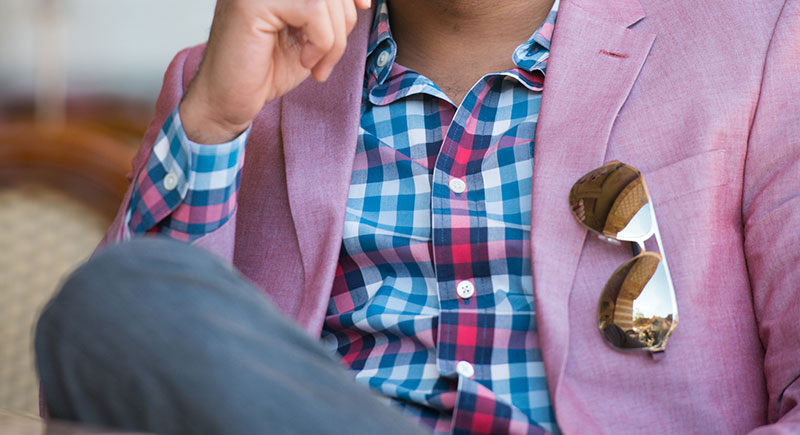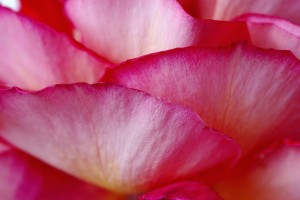How Colour affects Behaviour
Colour has a Powerful affect on Human Behaviour
We learn at an early age to interpret our environment as much by colour as by shapes or sounds.
Our response to colour is so basic that until the age of about 5, 6 or even later, children who are asked to sort coloured shapes automatically divide them according to their colour, rather than their shape.
Throughout life we continue to use colour as a cue for interpreting what we see : a red apple tells of its ripeness ; red traffic lights brings us to a halt. Colour coding guides our travels, our administration and such practical details as electric wiring.
At another level, we make statements about our mood with the colours we wear, and we can read how our friends feel too, through their colour statements
The colours we see around us can noticeably affect our states of mind and our feelings, the colour in a red room produces very different sensations from those in a room painted blue.
An article by Lindsay Gruson for The New York Times, speaks about this :
Bubble Gum Pink
WHEN children under detention at the San Bernardino County Probation Department in California become violent, they are put in an 8-foot by 4-foot cell with one distinctive feature – it is bubble gum pink. The children tend to relax, stop yelling and banging and often fall asleep within 10 minutes, said Paul E. Boccumini, director of clinical services for the department.
This approach to calming manic and psychotic juveniles contrasts sharply with the use of brute force favored as little as three years ago. ”We used to have to literally sit on them,” said Mr. Boccumini, a clinical psychologist. ”Now we put them in the pink room. It works.”
Not all psychologists are quite so sure; many, to put it mildly, remain skeptical. Nonetheless, officials at an estimated 1,500 hospitals and correctional institutions across America have become sufficiently convinced of the pacifying effect of bubble gum pink to color at least one room that shade.
Colour, Health and Behaviour
Passive pink, as it is also called, is perhaps the most dramatic example, and certainly the most controversial, of many attempts to use light and color to affect health and behavior. Already, there are enough color schemes to spark nightmares about mind control: red to increase appetite and table turnover in restaurants, ultraviolet to reduce cavities and spur children’s I.Q.’s,
”It seems clear that light is the most important environmental input, after food, in controlling bodily function,” reported Richard J. Wurtman, a nutritionist at the Massachusetts Institute of Technology. Several experiments have shown that different colors affect blood pressure, pulse and respiration rates as well as brain activity and biorhythms. As a result, colors are now used in the treatment of a variety of diseases.
Within the past decade, for instance, baths of blue light have replaced blood transfusions as the standard treatment for about 30,000 premature babies born each year with potentially fatal neonatal jaundice. Further, because the blue light irritates nurses working in these wards, many hospitals have added gold lamps to soothe their staffs.
Meanwhile, in England, London’s Blackfriars bridge was repainted blue in an attempt to reduce the number of people who commit suicide by jumping from it. The Soviet Union, one of the leaders in photobiology, showers coal miners with ultraviolet, which they believe prevents black lung disease, and supplements the fluorescent lights of schoolrooms with ultraviolet lamps.
The result, said Faber Birren, a color consultant for industry, is that ”children grow faster than usual, work ability and grades are improved and catarrhal infections are fewer.” Mr. Birren has published hundreds of articles and books on color and is widely considered the most authoritative source on the subject.
In the United States, ultraviolet has become a standard treatment for psoriasis. And white fluorescent light, in conjunction with photosensitizing drugs, is widely used to help heal herpes sores. More controversially, several municipalities are experimenting with passive pink to stop graffiti, while football coaches try the color in visitors’ dressing rooms, hoping to debilitate their opponents.
Though doctors and researchers may differ over how much is too much, they agree that some portions of the electromagnetic spectrum -such as X-rays, microwaves and ultraviolet rays – have significant effects on health. But by and large they reject such suggestions for visible light.
For example, Richard Wener, an environmental psychologist at the Polytechnic Institute of New York, said the claims made for passive pink were inflated. ”People love to see a magic bullet,” he said. ”It strikes me as very unlikely that we’ll find such a simple solution to very complex problems. In the real world, we usually find that the magical is fantastical.”
Some skepticism may be owing to the scars left by 19th-century colour healers, who claimed to cure everything from constipation to meningitis with glass filters. Nor has photobiology’s roots in mysticism, which empowered color with symbolism and magic, added to its credibility.
In addition, most color studies have been psychological, focusing on how light and color may affect behavior. Assertions about physiological effects have not, at least until recently, been based on strict and scientifically designed research. Mr. Birren also asserts that the training of 20th-century doctors makes them favor ”pills and surgery” and ”shots and prescriptions” over such cures as color therapy.


